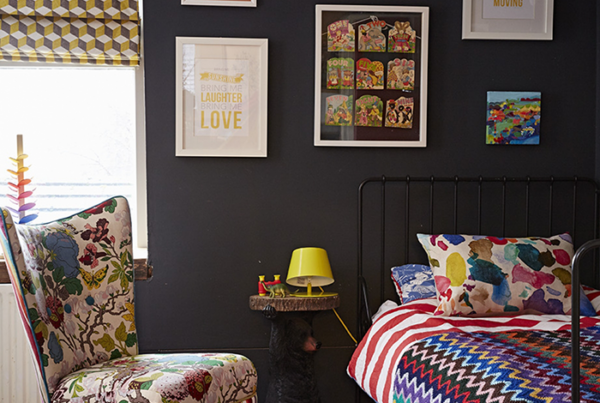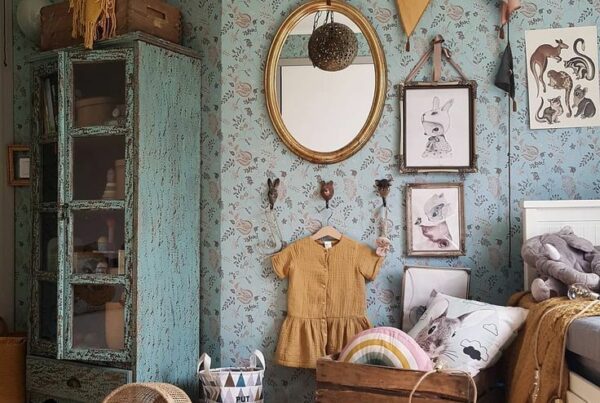Creating a nurturing environment for creativity and play is essential, especially for children. This article explores various strategies to enhance spaces through vibrant color palettes, functional furniture, themed decor, and elements of nature. By implementing these ideas, you can transform ordinary rooms into inspiring retreats that promote imagination and well-being.
Whether you’re designing a playroom, a study area, or any space meant to foster creativity, this guide offers practical solutions for enhancing those environments. You will discover how to utilize colors effectively, select multifunctional furniture, incorporate engaging themes, and bring in natural elements to create a calming yet stimulating atmosphere.
 Color Palettes That Inspire Creativity
Color Palettes That Inspire Creativity
Color has an undeniable influence on mood, creativity, and productivity. In spaces meant for play, work, or relaxation, choosing the right color palette can be especially impactful. This article explores how various color combinations can stimulate creativity and foster an inspiring environment.
Understanding the Psychology of Color
Before diving into specific color palettes, it is vital to understand the psychology of color. Colors evoke emotions and can trigger various responses. For example:
- Blue: Often associated with calmness and serenity, it can enhance concentration and creativity.
- Yellow: This bright and cheerful color is known to stimulate optimism and stimulate intellectual activity.
- Green: Symbolizing nature and harmony, green can create a rejuvenating atmosphere that facilitates creativity.
- Red: A powerful color that can evoke passion and excitement, making it suitable for energizing spaces but should be used sparingly to avoid overstimulation.
Inspiring Color Palettes
Now that we understand the effect of colors, let’s explore specific color palettes that are known to inspire creativity:
1. The Tranquil Tones Palette
This palette combines soft blues, muted greens, and gentle whites. These colors work together to create an atmosphere of peace, which can be particularly beneficial when working on creative projects that require focus and deep thinking. The tranquility promoted by this palette can reduce anxiety and help clear the mind, allowing for uninhibited creativity to flourish.
2. Vibrant Playful Palette
For those looking to inject energy and excitement into their creative spaces, a vibrant palette consisting of bright oranges, yellows, and pinks can be invigorating. These colors are stimulating and can lead to spontaneous bursts of creativity. Accent walls in mango orange or sunflower yellow can ignite inspiration, especially in playrooms or studios designed to foster imaginative thinking.
3. Earthy and Natural Palette
This palette consists of browns, deep greens, and soft neutrals. It draws inspiration from nature and can create a grounding atmosphere that encourages creativity while providing comfort. Incorporating textures and natural materials in addition to these colors can enhance this effect. Think of a cozy corner filled with leafy plants and wood elements—an ideal setup for brainstorming or artwork.
4. Monochromatic Magic
Another trend is using a monochromatic color scheme, where varying shades of a single color are used throughout a space. For example, different hues of blue can be combined to create depth while maintaining a cohesive look. This palette minimizes visual distractions and allows the mind to focus on creative pursuits, making it particularly effective in workspaces.
Creating Your Own Inspired Palette
When selecting a color palette, it’s essential to consider personal preferences and the specific activities that will take place in the space. A great way to start is by gathering inspiration from various sources—nature, art, and even social media platforms like Instagram offer a wealth of ideas. Try these steps to create your own inspiring color palette:
- Identify your mood goals: Decide whether you want calmness, energy, or creativity to take center stage.
- Pick a base color: Choose a primary color that resonates with the mood you wish to evoke.
- Complement with accents: Select complementary colors that can enhance the base one while introducing versatility.
- Test and Iterate: Use paint samples or digital tools to visualize the combinations in your space before committing.
In conclusion, carefully curated color palettes are key to creating spaces that inspire creativity and innovation. By understanding the psychology of color and choosing palettes that reflect individual needs and preferences, you can transform any environment into a source of inspiration and productivity.
Functional Furniture for Playful Spaces
Functional furniture is an essential element in the creation of playful spaces, especially in areas designed for children and imaginative play. The right pieces not only serve practical purposes but also stimulate creativity and the sense of adventure that is crucial for childhood development. In this exploration, we delve into various types of functional furniture that encourage exploration, foster a love for creativity, and adapt to evolving needs.
Multi-Functional Designs
One of the most effective ways to create a playful space is through the use of multi-functional furniture. Combining several uses into a single piece can free up valuable space and provide opportunities for play and learning. Here are some popular options:
- Bunk Beds with Built-In Desks: These not only save space but also provide a designated area for homework or crafts.
- Storage Ottomans: Perfect for organizing toys while also serving as seating, these versatile pieces encourage tidiness and can be used during playtime.
- Convertible Sofas: Ideal for unexpected sleepovers or playdates, ensuring that the area remains flexible and accommodating.
Interactive Elements
Adding interactive elements to furniture can turn mundane activities into engaging ones. Consider the following types of innovative furniture designs:
- Activity Tables: These tables can include built-in games, art stations, or even magnetic surfaces, making them excellent spots for creative expression.
- Climbing Structures: Furniture that doubles as a climbing frame not only promotes physical activity but also stimulates imaginative play. Structures that resemble castles or forests can spark adventures without needing elaborate setups.
- Furniture with Chalkboard Surfaces: Chairs and tables featuring a chalkboard finish allow children to draw and write, adding a personal touch and encouraging artistic exploration.
Colorful and Thematic Pieces
The colors and themes you choose for functional furniture play a significant role in setting the tone for a playful environment. Here are some pointers:
- Bright Colors: Incorporating furniture in vibrant hues such as mittens, yellows, and blues can stimulate excitement and joy in any space.
- Themed Furniture: Utilizing pieces that align with children’s favorite themes—like outer space, fairy tales, or nature—can further ignite imagination. Think of beds shaped like cars or desks adorned with animal motifs.
Adaptable Pieces for Growing Kids
Children grow and their needs change. Furniture that can grow with them ensures longevity and continued engagement. Some adaptable options include:
- Adjustable Desks: Desks that can be lowered or raised are perfect for accommodating various ages and can be easily repurposed as children grow older.
- Modular Sofas: These allow parents to reconfigure seating arrangements as needed, keeping the space fresh and responsive to changing play patterns.
- Stackable Chairs: Providing easy-to-store seating that can be rearranged for different activities promotes creativity while optimizing space.
Incorporating functional furniture designed for playful spaces can transform an ordinary room into a vibrant environment brimming with opportunities for creativity and exploration. Whether you are designing a bedroom, playroom, or a shared family space, considering a mix of multi-functional, interactive, thematic, and adaptable furniture pieces will result in a space that is not only practical but also inspiring.
For further inspiration on children’s furniture that promotes play and creativity, you can visit Circu Magical Furniture, a brand dedicated to crafting unique pieces that ignite imagination.
 Themed Decor Ideas to Ignite Imagination
Themed Decor Ideas to Ignite Imagination
Creating a vibrant and imaginative space is essential for fostering creativity, especially in children. Themed decor plays a pivotal role in transforming a mundane room into an enchanting environment that can spark curiosity and inspire play. Here are some unique themed decor ideas that will ignite the imagination in any setting.
1. Enchanted Forest Theme
Transform a child’s room into a magical forest where they can embark on adventures with fairies and woodland creatures. Here are some elements to incorporate:
- Wall Murals: Use wall decals or murals depicting trees, animals, and enchanted scenes to create an immersive atmosphere.
- Nature-Inspired Fabrics: Choose bedding, curtains, and cushions with leaf and animal prints to enhance the theme.
- Interactive Areas: Set up a reading nook with a tent or canopy resembling a forest, where children can dive into storybooks about mythical creatures and adventures.
This theme not only enhances decor but also encourages imaginative storytelling and exploration.
2. Outer Space Adventure
Ignite the thrill of exploration and discovery with an outer space theme. This decor embraces the mystery of the universe and can include:
- Galactic Wall Art: Install glow-in-the-dark stars and planets, making the room feel like a spaceship or a planetarium.
- Astronaut Bedding: Incorporate space-themed beddings with rocket ships and astronaut images to foster a sense of wonder about the cosmos.
- Educational Elements: Include a star chart or a model of the solar system to blend fun with learning, encouraging children to explore science while enjoying their space.
With this theme, each bedtime becomes a new adventure into the universe!
3. Underwater Paradise
Bring the wonders of the ocean into the home with an underwater paradise theme. Imagine vibrant colors and aquatic life all around:
- Oceanic Color Palette: Use shades of blue, turquoise, and coral for walls and accessories to simulate an underwater feel.
- Marine Life Decorations: Hang fish-shaped mobiles and artwork featuring sea creatures to add life to the space.
- Textured Touches: Incorporate textures that mimic sandy shores or coral reefs with rugs, cushions, and wall textures.
This theme can create a calming and visually captivating environment, perfect for relaxation and play.
4. Adventure in the Jungle
Bring the thrill of the jungle to your home where children can pretend they are explorers embarking on exciting quests:
- Jungle Prints: Use bold animal prints and green hues in rugs, curtains, and wallpapers to set the scene.
- Tents and Forts: Create a jungle tent or fort with fabric and vines, perfect for storytelling and imaginative play.
- Plant Life: Add real or artificial plants to mimic a jungle environment, which can also promote an appreciation for nature.
This decor theme not only stimulates creativity but also allows an exploration of biodiversity and adventure.
5. Fairy Tale Kingdom
Finally, transform the room into a whimsical fairy tale kingdom where dreams take flight. This theme can involve:
- Royal Colors: Use rich tones of purple, gold, and pink throughout to create a majestic ambiance.
- Castle Elements: Incorporate castle-shaped beds, turrets, and royal banners to reignite the feeling of fantasy.
- Creative Story-Telling Areas: Designate a special reading corner where children can immerse themselves in their favorite fairy tales.
Encouraging children to explore stories of bravery, adventure, and kindness expands their imaginative horizons.
These themed decor ideas not only beautify a space but also enrich a child’s growth by nurturing creativity and playfulness. By engaging children’s imaginations with their surroundings, their rooms become more than just sleeping spaces; they turn into realms of possibility.
For more inspiration on creating imaginative spaces for children, you may find this resource helpful. This article section provides distinct ideas for themed decor that encourage imagination without overlapping content from the other sections of the article. It also includes external links for additional insights on creating playful spaces.
Incorporating Nature for a Calming Retreat
Creating a peaceful and serene environment in your home can be significantly enhanced by incorporating elements of nature. This process not only elevates the aesthetic appeal of your space but also promotes mental well-being. Let’s explore the ways you can integrate natural elements into your home, resulting in a calming retreat where tranquility meets inspiration.
1. Embracing Natural Light
One of the simplest yet most effective ways to bring nature indoors is by allowing natural light to flood your rooms. Natural light has been shown to have numerous benefits for mental health, helping to improve mood and reduce stress. Consider the following ways to maximize natural light:
- Use large windows: If possible, install floor-to-ceiling windows or expansive glass doors that provide an unobstructed view of the outdoors.
- Utilize light colors: Choose light-colored walls and furnishings that reflect sunlight, creating a brighter ambiance.
- Add mirrors: Placing mirrors strategically can reflect light and create the illusion of a more spacious area.
2. Incorporating Plants
Bringing greenery into your living space can create a calm retreat, reminiscent of a peaceful garden. Houseplants not only purify the air but also help to reduce feelings of anxiety. Here’s how to incorporate plants effectively:
- Select the right plants: Opt for low-maintenance varieties such as succulents, snake plants, or peace lilies that thrive indoors.
- Create a green corner: Designate an area in your home with various plants to create a lush, tranquil nook.
- Use plant stands: Elevate your greenery with stylish plant stands to add dimension and visual interest.
3. Choosing Natural Materials
The materials you use in your home can greatly influence the overall feel of your space. Selecting natural materials can create a soothing environment, reminiscent of the great outdoors. Consider these options:
- Wood: Incorporate wooden furniture, beams, or flooring to add warmth and connection to nature.
- Stone and bamboo: Use stone countertops or bamboo decor items to accentuate an organic feel.
- Soft textures: Opt for natural fibers like cotton, wool, or linen for curtains and upholstery, offering both comfort and style.
4. Utilizing Water Features
Water has a calming effect, making it an excellent addition to create a relaxing ambiance in your home. You can introduce the sounds and sights of water in various ways:
- Indoor fountains: A small indoor fountain can create soothing sounds that mask background noise while promoting a tranquil atmosphere.
- Aquariums: Keeping fish in a well-maintained aquarium can not only be visually pleasing but also has a therapeutic effect on stress levels.
5. Creating Outdoor Spaces
If you have outdoor areas, transforming them into extensions of your indoor sanctuary can enhance your connection with nature. Here’s how:
- Gardens: Design a flower or herb garden that requires minimal maintenance yet allows for engagement with nature.
- Comfortable seating: Add comfortable seating outdoors that encourages relaxation and contemplation.
- Fire pits: Incorporate a fire pit to create a cozy gathering space that can be used year-round, fostering a sense of community.
For inspiration and guidance on incorporating plants into your home, consider visiting Ithaka Japan’s Plant Guide where you’ll find additional tips on selecting and caring for indoor plants.
Incorporating elements of nature in your home design offers a multitude of benefits. From choosing the right plants to enhancing light, sound, and textures, each decision contributes to creating a harmonious space that nurtures your spirit. In the next section, we will explore how to select color palettes that inspire creativity in your environment, ensuring a vibrant atmosphere that complements your serene retreat.
“`
This article offers practical insights into creating inspiring and imaginative spaces, particularly for children. Key approaches include selecting vibrant color palettes that evoke specific moods, utilizing functional and multi-functional furniture that adapts to changing needs, and incorporating thematic decor to stimulate creativity. Furthermore, integrating natural elements such as plants and natural light can foster a calming atmosphere, while interactive furniture paves the way for exploratory play.
For actionable steps, begin by identifying the mood you wish to create and select a corresponding base color. Consider multi-functional and adaptable furniture to maximize space and flexibility. Additionally, introduce playful themes in the decor and incorporate nature through plants and natural materials to enhance your living environment. These strategies will transform spaces into nurturing and dynamic areas that inspire creativity and well-being.


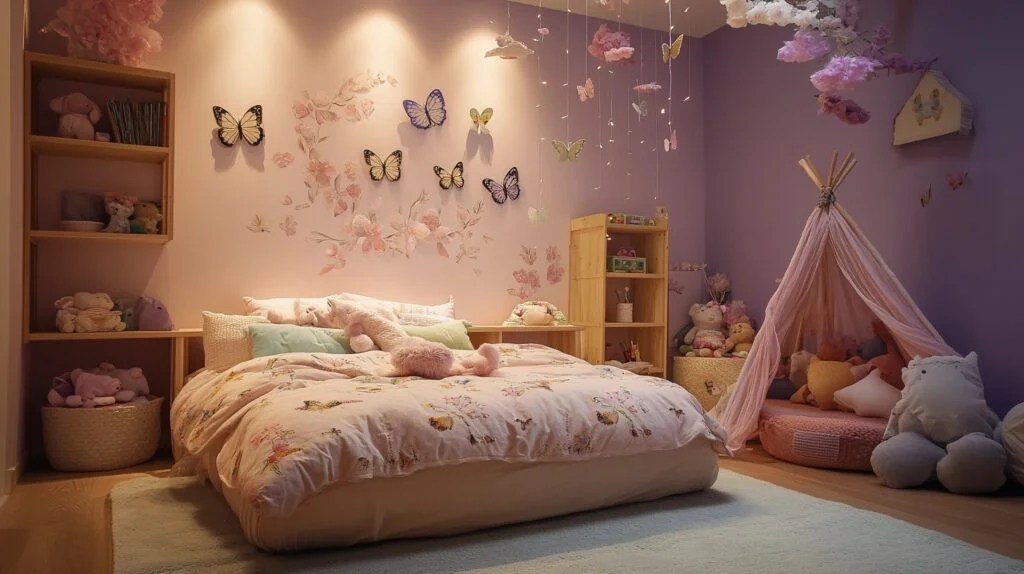
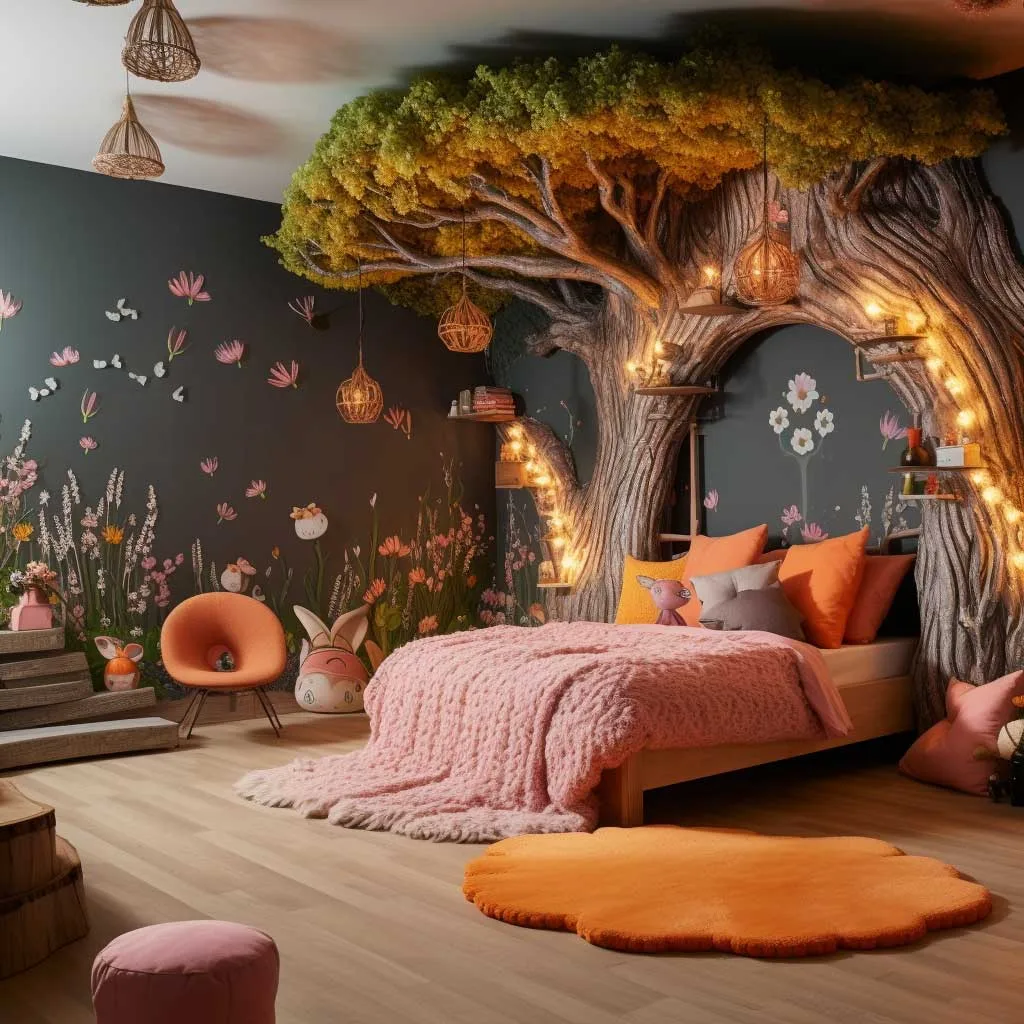 Color Palettes That Inspire Creativity
Color Palettes That Inspire Creativity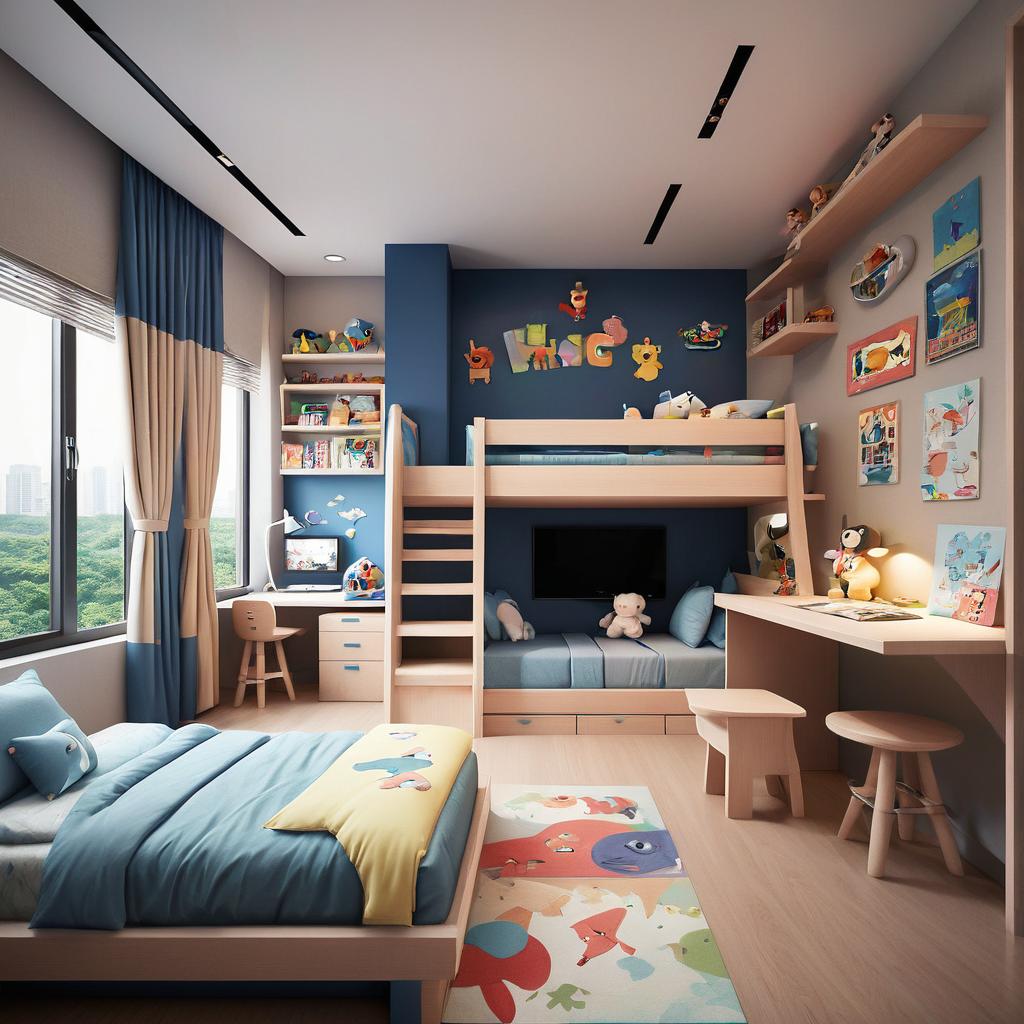 Themed Decor Ideas to Ignite Imagination
Themed Decor Ideas to Ignite Imagination